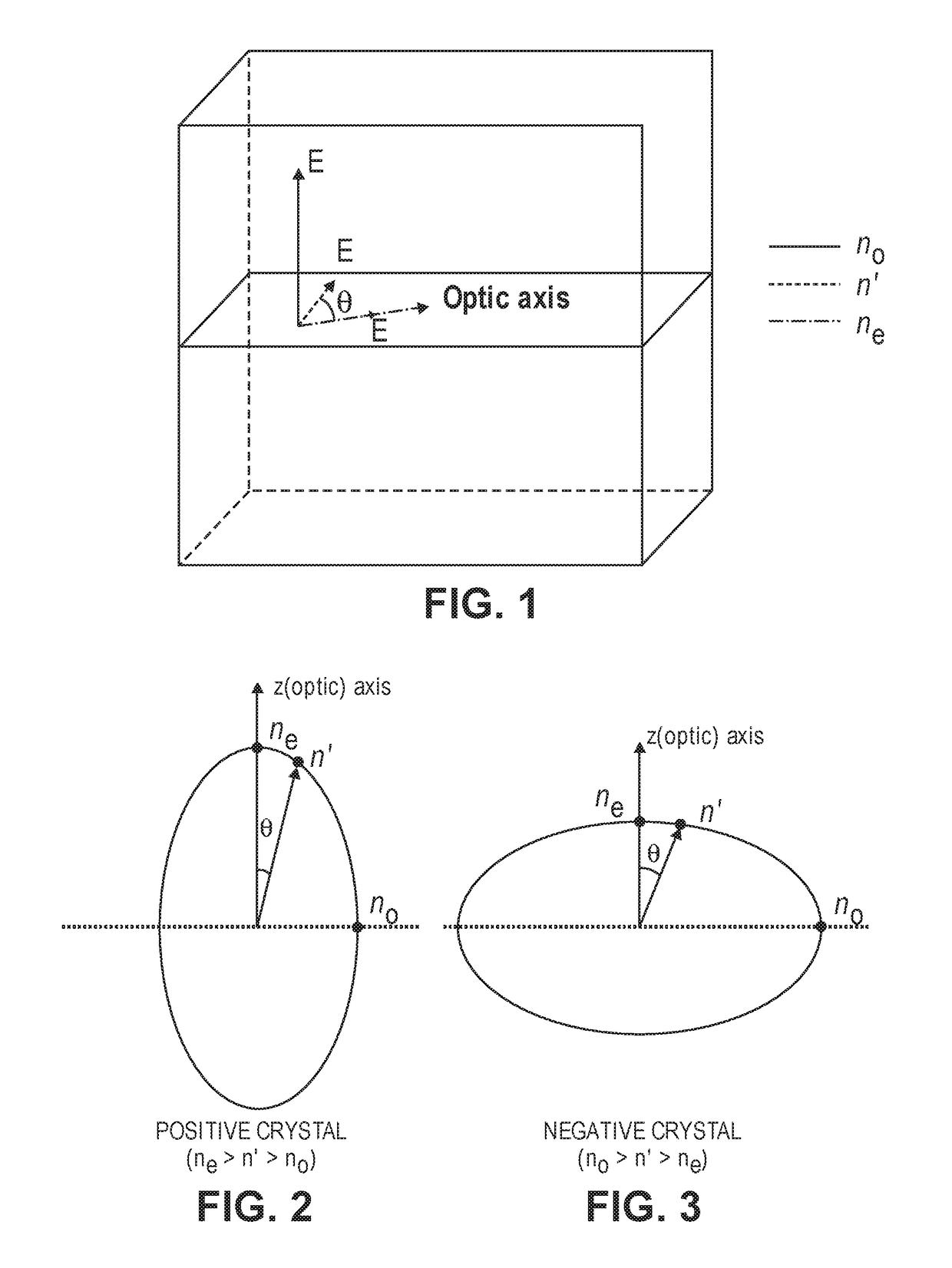Waveguide structures in anisotropic lasing and nonlinear optical media
- Summary
- Abstract
- Description
- Claims
- Application Information
AI Technical Summary
Benefits of technology
Problems solved by technology
Method used
Image
Examples
example 1
near Waveguide
[0154]An embodiment of the present invention is a lithium triborate LiB3O5 (LBO) waveguide. LBO is a biaxial optics crystal with a wide transparency range. In the preferred embodiment, a slightly off-axis LBO is used as cladding material to sandwich an on-axis LBO core.
[0155]The purpose of the waveguide is to achieve second-harmonic generation from a fundamental beam of 1070 nm to its second harmonic of 535 nm. The fundamental beam is polarized on the z-axis, while the second-harmonic beam is polarized on they-axis. Both beams propagate along the x-axis.
[0156]Technical advantages of using LBO include but are not limited to:[0157]1) The refractive index is slightly smaller than the core material, for both fundamental and second harmonic waves;[0158]2) Since they are the same material, the coefficients of thermal expansion are compatible, given that the core and the cladding LBO crystals only have a small angular deviation between them; and[0159]3) The refractive index i...
example 3
ser Waveguide
[0179]Consider a 40 μm thick planar laser waveguide employing Yb:YLF as core material, such as that in FIGS. 4A-4E, for the purpose of emitting at 1030 nm.
[0180]YLF is positive uniaxial crystal whose extraordinary refractive index ne=1.4704 and ordinary refractive index no=1.4482. For Yb:YLF laser, the emission line at 995 nm is polarized along the c-axis (extraordinary). Therefore, the inner cladding should be slightly tilted (see FIG. 4E) such that a single-mode waveguide along the lateral direction can be formed. According to Eq. (2), the index difference is calculated to be Δn=5.89×10−5. According to Eq. (5), tilt angle θ<0.051°. If single-mode operation is not a requirement, the tilting angle can be larger.
Example 4: Nd:YVO4 Laser Waveguide
[0181]A Nd:YVO4 waveguide is formed using a higher concentration Nd:YVO4 material as the core and lower concentration Nd:YVO4 material as the inner cladding. The refractive index difference needed to form a single-mode or multimo...
example 5
Waveguide Capped Yb:YLF Laser Waveguide
[0182]Consider an active gain medium of Yb:YLF, the same type as in Example 4. On the two ends, a short Nd:YLF waveguide, whose length is in the order of ˜5 mm, is bonded to the Yb:YLF waveguide. The absorption peak for Nd:YLF is at 808 nm, while the absorption peak for Yb:YLF is at 960 nm. When pumped at 960 nm, the two short Nd:YLF waveguides will not lase. The mode profile of the Nd:YLF waveguide is designed in such a way that it matches the mode profile of the Yb:YLF to the best extent by slightly tilting the inner cladding Nd:YLF, as described before, such that the laser radiation can propagate in the entire waveguide structure with minimal loss.
[0183]Technical advantages of such a capped laser waveguide design include: 1) protecting the optical coating; and 2) mitigating thermal-induced fracture, by moving the focus point of pump beam to the inactive end rather than directly focusing on the active gain medium.
[0184]Other Notes
[0185]A diff...
PUM
 Login to view more
Login to view more Abstract
Description
Claims
Application Information
 Login to view more
Login to view more - R&D Engineer
- R&D Manager
- IP Professional
- Industry Leading Data Capabilities
- Powerful AI technology
- Patent DNA Extraction
Browse by: Latest US Patents, China's latest patents, Technical Efficacy Thesaurus, Application Domain, Technology Topic.
© 2024 PatSnap. All rights reserved.Legal|Privacy policy|Modern Slavery Act Transparency Statement|Sitemap



